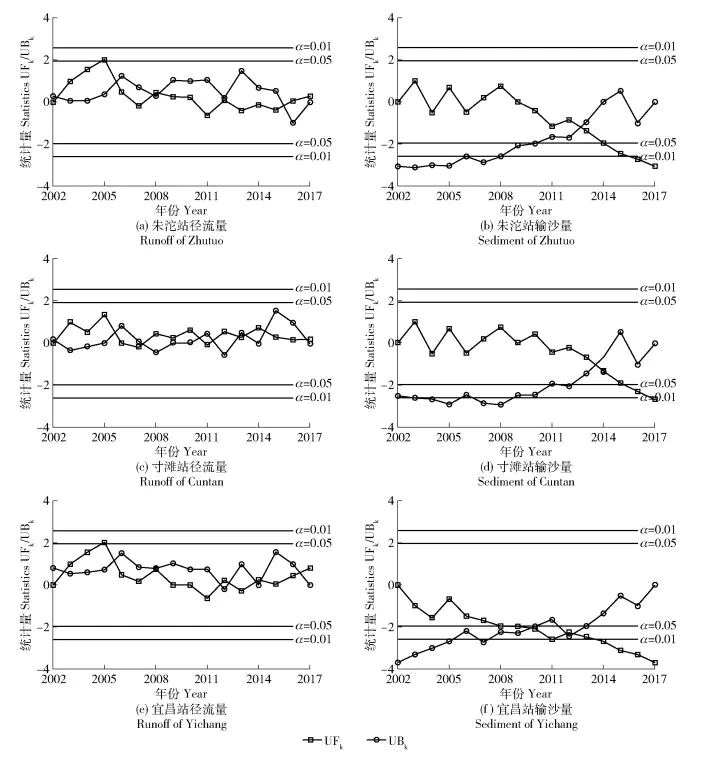Change analysis of runoff and sediment in the Three Gorges Reservoir Region in recent 16 years
 Statistics UFk/UBk series of annual runoff and sediment at three hydrological stations in 2002-2017
Statistics UFk/UBk series of annual runoff and sediment at three hydrological stations in 2002-2017
Abstract
Runoff and sediment regime play important roles in the stability of the fluvial ecosystem and may alter river morphology. The multi-relationship between runoff and sediment is widely used to clarify the spatial-temporal change law of a river. The Three Gorges Reservoir Region is one of the most important ecological areas and the operation of the Three Gorges Reservoir has huge influence on the runoff and sediment. This study may expand our understanding of the multi-relationship between runoff and sediment and give reference to reservoir operation and the sediment problem. Based on the runoff and sediment data of three major hydrologic stations, Mann-Kendall test and double cumulative curve analysis method were conducted to analyze the statistical characteristics, trend, mutations in runoff and sediment time series, and the correlation between runoff and sediment to discover runoff and sediment changes in recent years. The result shows that (1) The annual variance of runoff and sediment of all the hydrological stations was similar, which were concentrated in May to October (flood season). As the observation station located at the downstream of the reservoir, Yichang station dispersed its runoff in non-flood season (November to April next year) and concentrated sediment in flood season. Deviation coefficient of annual runoff (Cv) ranged between 0.101-0.111 and deviation coefficient of annual sediment (Cs) was in the range of 0.510-1.172; (2) Annual runoff in 3 stations showed an indistinctive increase trend (P>0.05), while sediment showed a significant decrease trend (P<0.01). Runoff and sediment time series mutations happened in 2005 and 2013 respectively, which could be explained by the operation of water conservancy and hydropower projects upstream, special hydrological year and reservoir regulation activities; (3) Relationships between runoff and sediment varied in different time series, and this result was associated with human activities and fluvial environmental changes. In general, compared to runoff, sediment presents more significant change in recent years. Climate changes and human activities both affect sediment change and the latter one is more notable. Human activities, especially the construction of reservoirs and hydropower projects, take the major role in the decline of sediment, soil and water conservation functions as well.